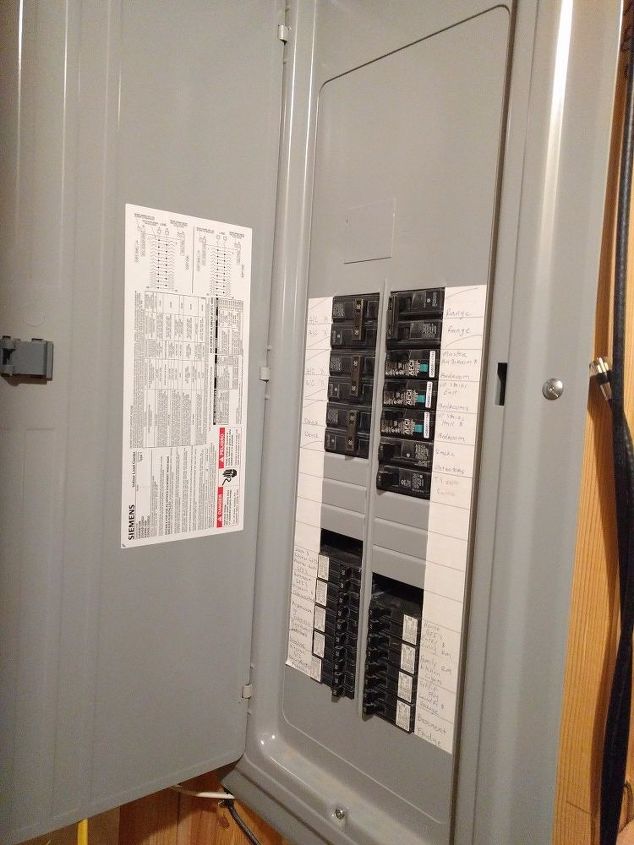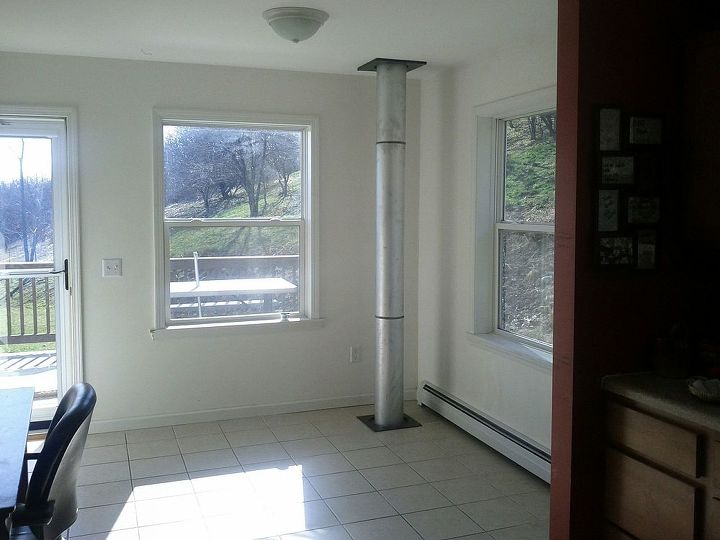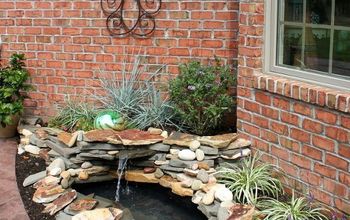I plan to retrofit cans or replace incandescent bulbs in my 25 recessed light fixtures throughout the house.

-
Nora...When I set up my off grid cabin I modified some basic mini can lights that used 50 gu10 halogens to accept an e27 1.8 watt multi chip LED...later I found some GU10 bulbs in 12 v dc...so I did not have to swap out the "guts" of these lamps. In some of my prototype testing I ran a number of different bulbs...of those the Cree bulbs were the most powerful. Some of the ones I tested were in the 120 v ac camp...others in 12 v ac and DC. I ended up using the 12 V DC as my choice, which can run off of the "native" current of my solar systems battery. This way all of my lights there can be run without having to power the inverter...which saves even more energy. I can light my entire cabin for less than 40 watts. If you can seal the inside of these cans, with a simple kit go for it. While I do not have direct experience with that specific bulb. I have been running my leds. ( some of them cree, for a couple of years now) I'm going to begin to phase them in at my home as my older CFL's drop out.
 KMS Woodworks
on Dec 01, 2011
Helpful Reply
KMS Woodworks
on Dec 01, 2011
Helpful Reply -
-
I just found these at the HD web site... http://www.homedepot.com/h_d1/N-5yc1v/R-202240932/h_d2/ProductDisplay?selectedCatgry=SEARCH+ALL&jspStoreDir=hdus&catalogId=10053&navFlow=3&keyword=4897032600027&Ntpc=1&langId=-1Ν=P_PARENT_ID&storeId=10051&Ntpr=1&ddkey=Search&AID=10368321&SID=u265830t3270702f9fp0dd0c0s671&cj=true&PID=2026489&cm_mmc=CJ-_-2026489-_-10368321 Reading through some of the reviews ( 100 + five star ratings) some folks talk about rebates from the power company...to cut the cost way down...other talk about a special low power "diva" dimmer that reduces potential flicker when in dim mode.
 KMS Woodworks
on Dec 01, 2011
Helpful Reply
KMS Woodworks
on Dec 01, 2011
Helpful Reply -
-
Seeing that your planning to seal your can lights you want to be sure that no one puts a standard light back in. With the common screw in type Edison base that most bulbs use this risk is raised should a Edison based NON-CFL light bulb be replaced by accident. By using a plug in style CFL light bulb fixture adapter you prevent this overheating concern should the bulb burn out as they cannot remove the conversion Edison to plug in base in the fixture without damaging it. How are you planning to air seal the can from below? The link that KMS provided is a good alternative, but the lights cannot be dimmed. Also do not forget even though the lights your considering are able to be dimmed, you must have a special dimmer switch, the standard ones you purchase and use with the old style element light bulb will not work. As far as cost, that number is about normal for this type of bulb and fixture. Reliability? Have not heard anything about issues with early burn outs. There all expensive, but combine the savings on electrical use, the savings on heat and the increased comfort, you win all the way around.
 Woodbridge Environmental Tiptophouse.com
on Dec 01, 2011
Helpful Reply
Woodbridge Environmental Tiptophouse.com
on Dec 01, 2011
Helpful Reply -
-
Excellent, check Alibaba or Ebay for your best price. I am assuming that your going LED because of the energy savings, so be sure to audit the rest of your house for energy eating items other wise it will be pointless to spend all that money in the long run. Example you change out your light bulbs before you change out that electrical water heater. The money is better spent on changing the electric water heater hog before the lighting. C.R. Draves
 CR Draves . com
on Dec 01, 2011
Helpful Reply
CR Draves . com
on Dec 01, 2011
Helpful Reply -
-
I would just suggest that you first be sure the light emmited is going to be strong enough and not too harsh. Maybe by just doing one room first. Good green idea!
 Glkirk Builders Inc.
on Dec 01, 2011
Helpful Reply
Glkirk Builders Inc.
on Dec 01, 2011
Helpful Reply -
-
I did that, replaced my incandescent light bulbs with Cool White CFL/Compact Fluorescent Bulbs and every month I am saving a bundle of $$$$. I do not have a single old style bulb in the house.
 Charles R
on Dec 01, 2011
Helpful Reply
Charles R
on Dec 01, 2011
Helpful Reply -
-
I can't afford the LEDs, but I've seen great reviews of the EcoSmart bulbs. They will last far longer than either CFLs or incandescents, and they don't have any of the mercury concerns that come with the CFLs.
 3po3
on Dec 01, 2011
Helpful Reply
3po3
on Dec 01, 2011
Helpful Reply -
-
Thanks, everyone, for your input. I'll be using LEDs because I can't stand CFLs. In my experience CFLs don't even last as long as incandescents and I don't want to be concerned with breakage and disposal issues. I appreciate the thoroughness of these replies. I just got off the phone with Cree tech and he cleared some things up for me. Contrary to what my local eco-oriented energy auditor/contractor told me in suggesting these fixtures, it looks like I'll still have to replace or cover the can housings in the attic because neither the LED retrofit can or bulb fixture is air-tight. I was hoping to kill two issues with one stone but now I don't think I'll be able to do that. Thanks, all! My advice to all of us is to get "second opinions" about upgrades directly from the manufacturers' technical experts. I'll take this new info back to my eco contractor for his input/rebuttal, but I'm pretty sure the Cree tech is correct; he and I discussed the guts of the product and everything he said made sense to me. Maybe I should be an investigative reporter???
 Nora
on Dec 02, 2011
Helpful Reply
Nora
on Dec 02, 2011
Helpful Reply -
-
KMS, your link is exactly what I was looking at purchasing :)
 Nora
on Dec 02, 2011
Helpful Reply
Nora
on Dec 02, 2011
Helpful Reply -
-
Nora.....you pay for what you get. Without question, use the Cree products. Here is a link to the residential retro fit kit......replacing the 65 wall R30 flood lamp and is dimable to 5%. http://www.creeledlighting.com/Products/Downlights/6inchdownlights/CR6.aspx This is assuming that you have 6 inch cans. Also, add a bead of caulk between the can and the ceiling cutout to prevent air leakage. No need to crawl into the attic. Have a great Holiday Season.
 LandlightS
on Dec 02, 2011
Helpful Reply
LandlightS
on Dec 02, 2011
Helpful Reply -
-
Thanks, Landlights. Yes, this is the same one I was considering. My big question is whether or not these will drastically cut air migration to the attic when placed inside standard, non air-tight, non insulation-contact housings. Looking at the photos one could assume the answer's yes because there are no visible gaps. Cree tech says no. Does anyone know the answer to that based on experience?
 Nora
on Dec 02, 2011
Helpful Reply
Nora
on Dec 02, 2011
Helpful Reply -
-
The major difference in a non-ic can and an ic rated can is the rating of the lamp wattage. A non-ic can is generally rated for up to a 150 Watt incandescent lamp. A IC rated can has a thermal protector and is generally rated up to a 75 watt lamp. Heat is the major reason for lamp rating. If the IC can is fitted with a 100 watt lamp, the thermal protector will turn off the lamp until to temperature is reduced. Ever see a recessed light blinking on and off????? As the LED lamp only used 10 - 11 watts of energy, there is no worry of the high temperature associated with the incandescent lamp. If you want to create an airtight can, just line the upper portion of the housing with aluminum foil to close off the open slots (you could use a spray adhesive to hold the foil in place). Also, caulk the edge at the ceiling as I stated above, this will prevent any air leakage between the ceiling a the trim of the retro-fit kit, Also, I agree 150% with you comments on CFL's.
 LandlightS
on Dec 02, 2011
Helpful Reply
LandlightS
on Dec 02, 2011
Helpful Reply -
-
Landlights--Now that sounds like a plan. You don't see any safety reason for NOT creating my own insulation inside the can, as long as I'm using LED bulbs? That's one idea I'd also thought of but when I asked the tech he said no, you can't insulate the housing. I figured, though, that he had to say that in order to keep things to code and not give advice that could get him and his company into legal trouble. While no one reading this post should consider all the advice as professional (legally liable) advice, you have given me reason to check into that idea further with some fire safety experts ;)
 Nora
on Dec 02, 2011
Helpful Reply
Nora
on Dec 02, 2011
Helpful Reply -
-
I just searched the following information...comparing the generated BTUs of LED, Incandescent and CFL Heat Emitted LED Incandescent CFL 3.4 btu's/hour 85 btu's/hour 30 btu's/hour Here is the link: http://www.designrecycleinc.com/led%20comp%20chart.html Very interesting fact sheet
 LandlightS
on Dec 02, 2011
Helpful Reply
LandlightS
on Dec 02, 2011
Helpful Reply -
-
Do not do insulation in the can. Its all about air sealing at this point. What you can do to stop the air flow is to use aluminum foil tape. You find this in the AC isle in most big box stores. Do not use duct tape. The metal tape will last a very long time and will stop the air flow out of the cans. When you can get into the attic then spray foam the can edge to the sheet rock ceiling to prevent any air from getting out of that area. Once done you can simply cover the light with insulation from above.
 Woodbridge Environmental Tiptophouse.com
on Dec 02, 2011
Helpful Reply
Woodbridge Environmental Tiptophouse.com
on Dec 02, 2011
Helpful Reply -
-
The only problem with that factsheet is that it's missing prices. LEDs are undoubtedly better than CFLs. Unfortunately, most LED bulbs are still out of the price range of most folks.
 3po3
on Dec 04, 2011
Helpful Reply
3po3
on Dec 04, 2011
Helpful Reply -
Related Discussions
How to get rid of mice?
We seem to have some unwelcome Mickeys and Minnies in our house. What is the best way to get rid of them?
How to remove popcorn ceiling with asbestos?
I want to remove my popcorn ceiling, but it has asbestos in it. How do I go about this safely?
How to caulk baseboard gaps?
How do I fill gaps at baseboard, should I caulk? If so, does anyone know how to caulk baseboards?
How to fix squeaky hardwood floors?
How do I fix squeaky hardwood floors?
How do I kill the power from my main breaker?
I have a home built in 2006, the main panel does not seem to have a main breaker...? See attached pic of the main panel. It's a Siemens G3040 200 amp panel. Outs... See more
Any Ideas for this corner with the wood stove pipe?
I am unclear as to what to do with this part of my house, "The Breakfast Nook".





